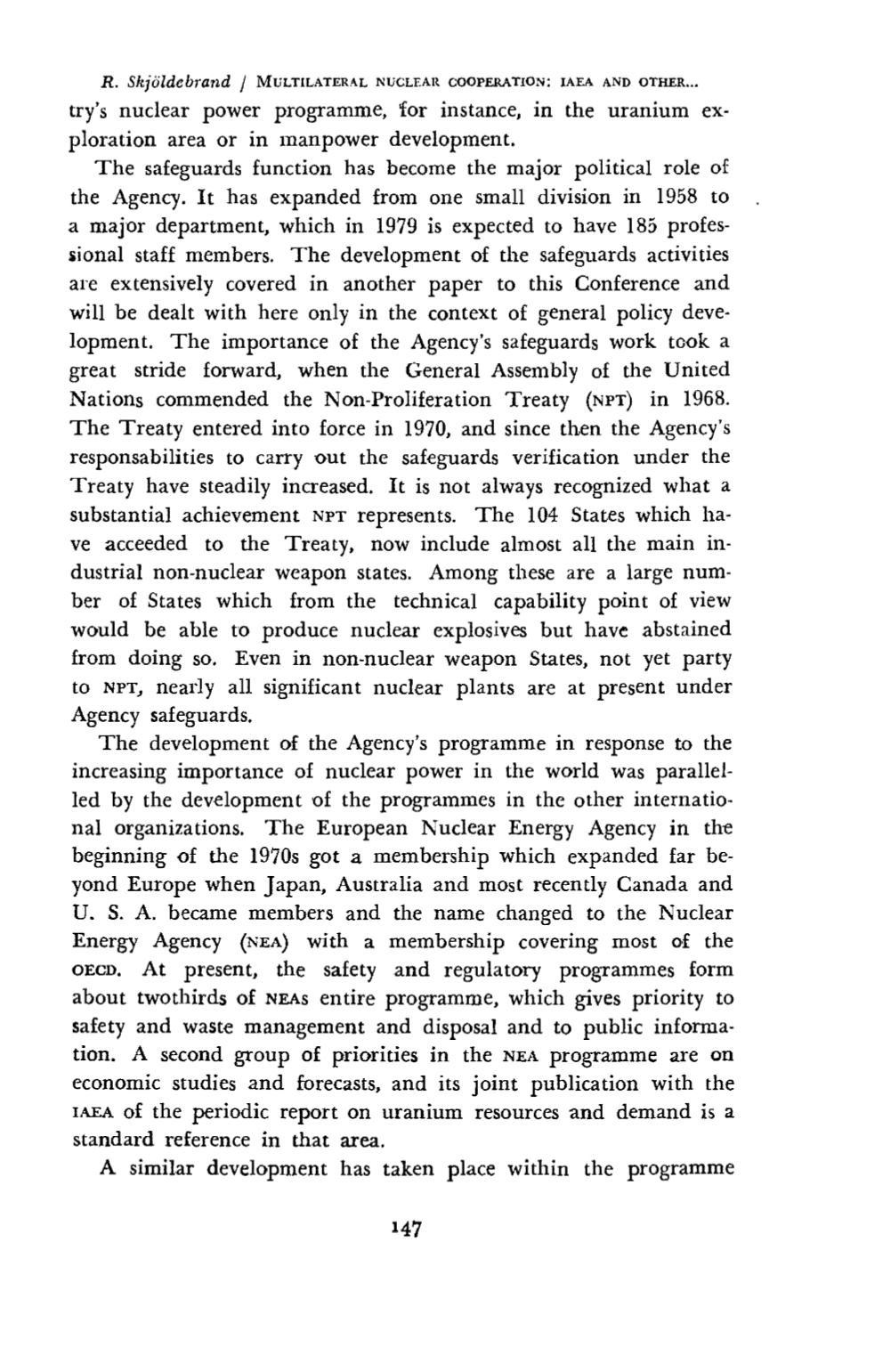
R. Sltj6ldebrand
J
MULTILATERAL NUCLEAR COOPERATION: IAEA AND OTHER•••
try's nuclear power programme, 'for instance, in the uranium ex–
ploratíon area or in manpower development.
The safeguards function has become the major polítical role of
the Agency.
It
has expanded from one small division in 1958
to
a major department, which in 1979 is expected to have 185 profes–
¡ional staff members. The development of the safeguards activitíes
are extensively covered in another paper to this Conference and
will be dealt with here only in the context of general policy deve–
lopment. The importance of the Agency's safeguards work to'Ok a
great stride forward, when the General Assembly of the United
Natíons commended the Non-Proliferatíon Treaty (NPT) in 1968.
The Treaty entered into force in 1970, and since then the Agency's
responsabilities
to
carry 'Out the safeguards verificatíon under the
Treaty have steadily increased. It is not always recognized what a
substantial achievement NPT represents. The 104 States which ha–
ve acceeded
lO
the Treaty, now include almost alI the main in–
dustrial non-nuclear weapon states. Among tbese are a large num–
ber of States which from the technical capability point of view
would be able
lO
produce nuclear explosives but have abstained
from doing so. Even in non-nuclear weapon States, not yet party
to NPT, nearly all significant nuclear plants are at present under
Agency safeguards.
The development of the Agency's programme in response
to
the
increasing importance of nuclear power in the world was parallel–
led by the development 'Of the programmes in the other internatio–
nal 'Organizations. The European Nuclear Energy Agency in the
beginning 'Of the 1970s got a membership which expanded far be–
yond Europe when ]apan, Australia and most recently Canada and
U. S. A. became members and the name changed to the Nuclear
Energy Agency
(N
EA) with a membership covering most of the
OECD.
At present, the safety and regulatory programmes form
about twothirds of NEAs entire programme, which gives priority to
safety and waste management and disposal and to public informa–
tion. A second group of priorities in the NEA programme are on
economic studies and forecasts, and its joint publication with the
lAEA
of the periodic report on uranium resources and demand is a
standard reference in that atea.
A similar development has taken place within the programme
147


